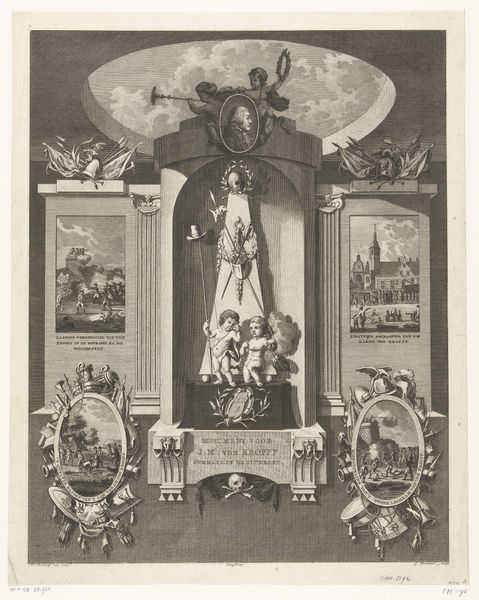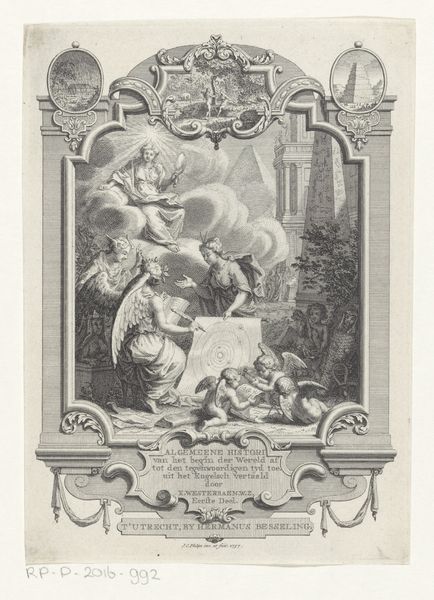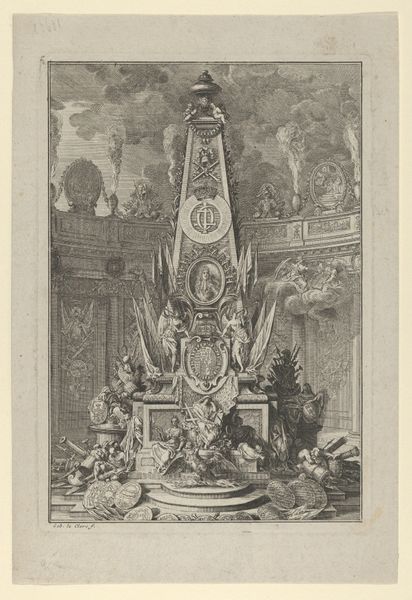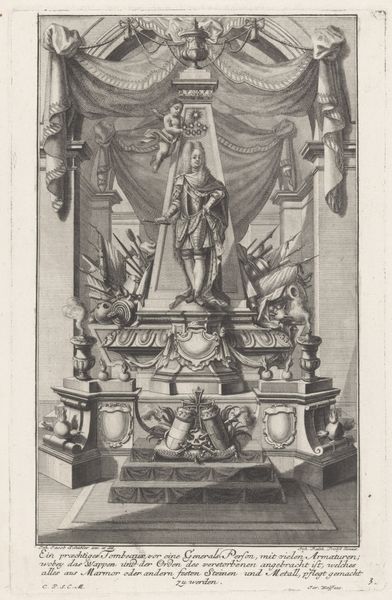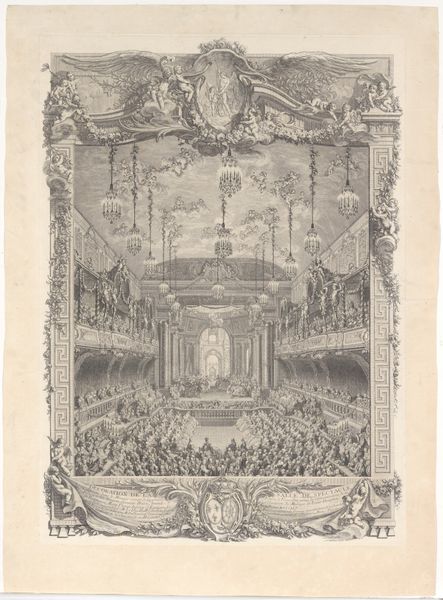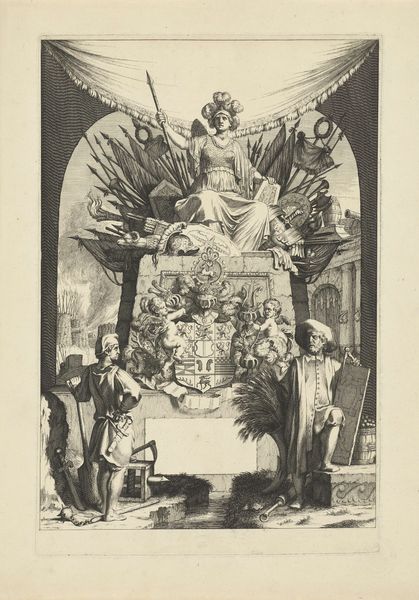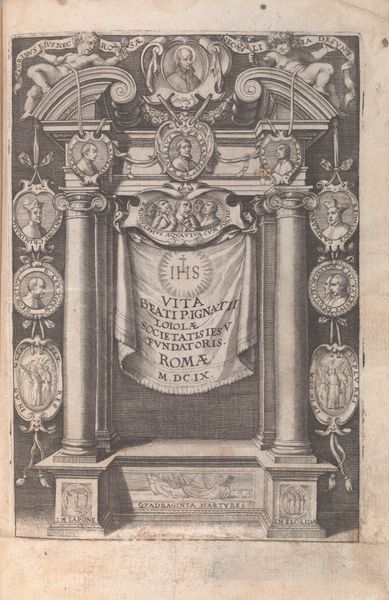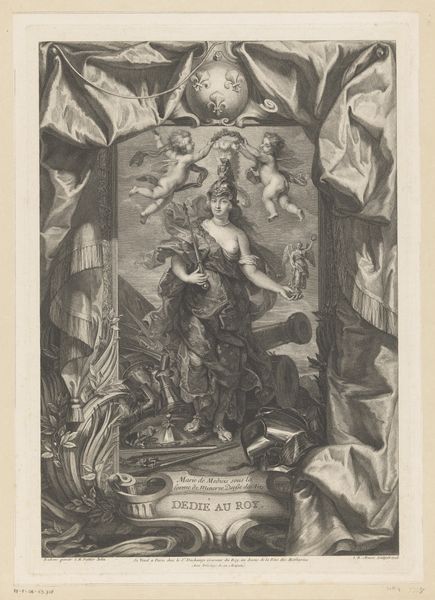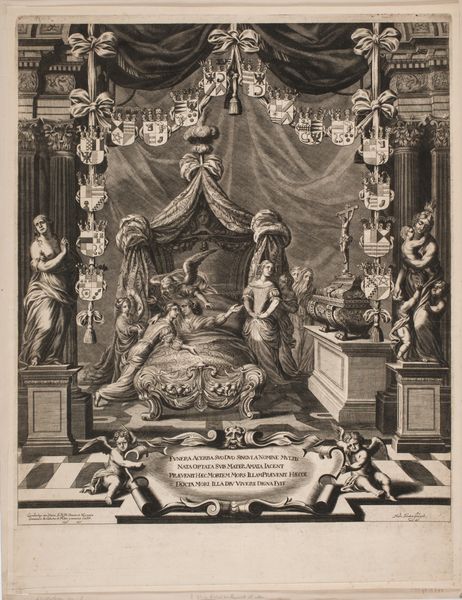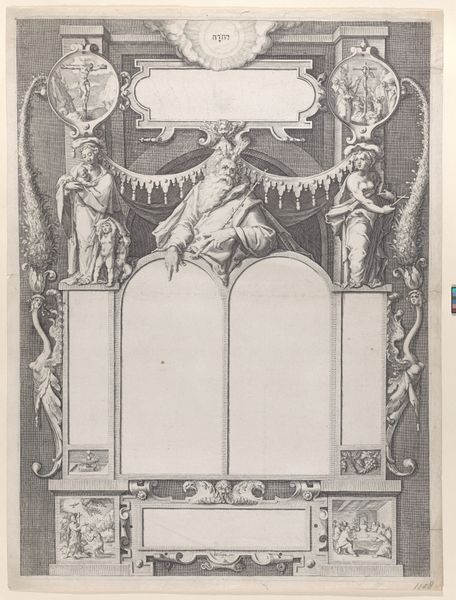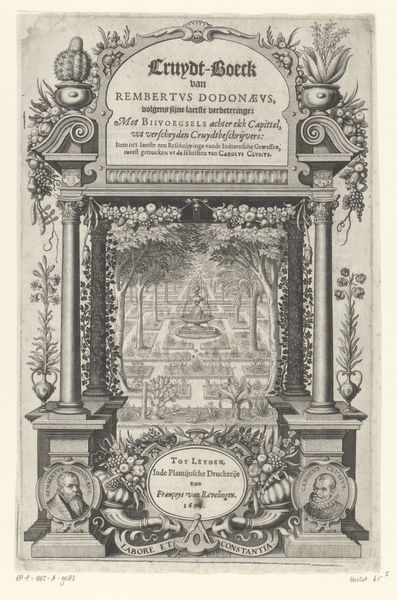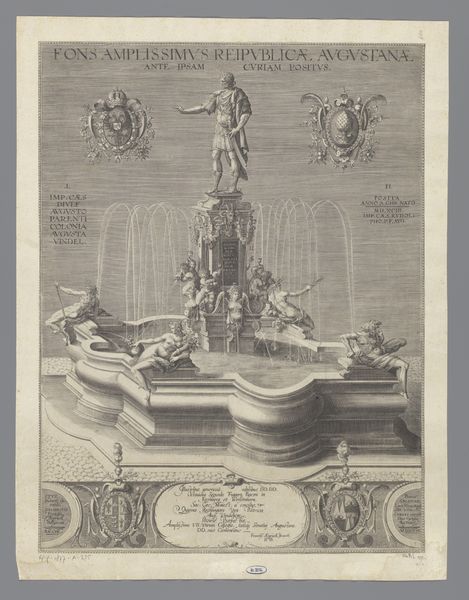
print, engraving
#
neoclacissism
#
allegory
# print
#
old engraving style
#
traditional media
#
classical-realism
#
form
#
19th century
#
line
#
history-painting
#
engraving
Dimensions: height 448 mm, width 355 mm
Copyright: Rijks Museum: Open Domain
Editor: This engraving, "Monument for Frederick, Prince of Hesse," was created in 1793 by Cornelis Brouwer. It feels like a symbolic summary of a life, grand and yet... distant. I'm curious, what do you see in this piece, beyond the immediate historical context? Curator: I see a carefully constructed edifice of power, rendered through the language of Neoclassicism. Note how Brouwer uses the visual vocabulary of antiquity – the Roman columns, the idealized figures – to imbue Prince Frederick with an aura of timeless authority. But what resonates most strongly are the embedded symbols, carefully positioned within the memorial. What meaning do you take from the allegorical figures hovering around the portrait? Editor: They seem to be bestowing honors, with the clouds and divine light suggesting an ascension, perhaps? Is that common in memorials of this time? Curator: Precisely. The iconography blends classical apotheosis with contemporary princely commemoration. The putti, the laurel wreaths… they’re all signifiers of victory, virtue, and divine favor. Look also at the framed vignettes to either side. Consider them not as literal depictions, but as curated representations of Frederick's life. Do these historical 'snapshots' suggest any underlying themes in his life and leadership? Editor: They seem to depict battles and processions, organized moments of victory and civic order, very controlled narratives. The imagery projects power, but almost too deliberately? Curator: The artist shapes our understanding of history, crafting an idealised narrative that suited the tastes and expectations of the time. That curated representation of events and life experiences through a symbolic structure emphasizes what parts of the life should be memorialized, in turn emphasizing the legacy Brouwer wished to bestow. The symbolism chosen, even today, gives an immediate glimpse into Brouwer's hopes for Prince Frederick. What is the power that symbols and their meanings still give to us now, centuries later? Editor: I never thought of an engraving holding so much cultural weight. The layering of symbols, like a coded language of power, is fascinating and feels like an open portal to understanding not just the person, but the values of that time. Curator: Indeed. Through a careful examination of visual symbols, we are able to get in touch with cultural memories and the ongoing story of who we once were, and where we now are.
Comments
No comments
Be the first to comment and join the conversation on the ultimate creative platform.
